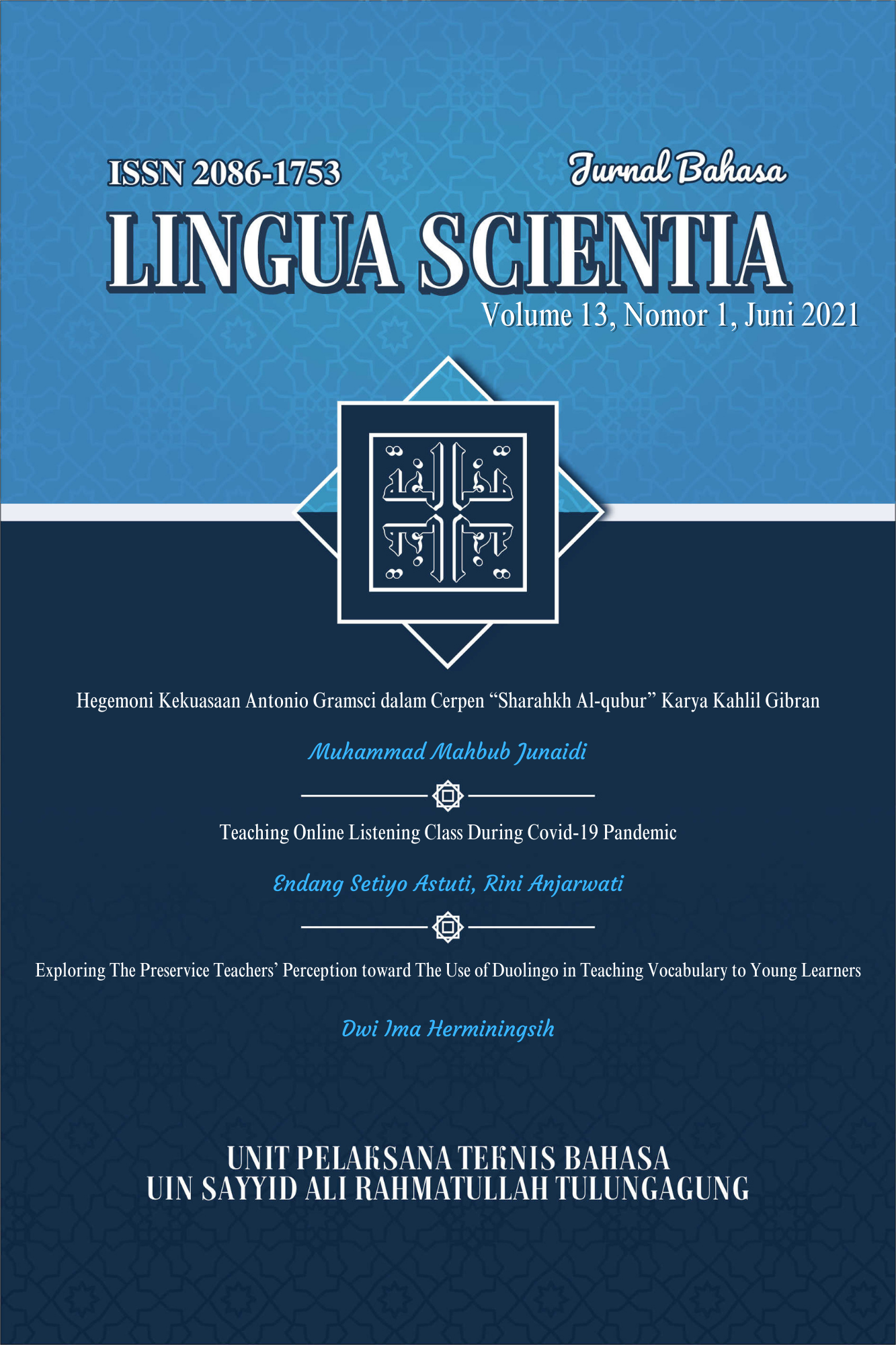REVEALING EXPRESSIONS OF HAPPINESS AND SADNESS IN STUDENTS’S ESSAYS BY GRADE 3rd AND 5th ELEMENTARY SCHOOL STUDENTS
Abstract
Psycholinguistics study is a study that focuses on language acquisition, both normal language acquisition (children in general), and language acquisition for children with special needs. Each person's language acquisition goes through a different process. The acquisition of the language is obtained from several factors that support the individual. This is evidenced by several other supporting factors such as environmental factors, age, intelligence, education, talent, demand, and others. This study will try to focus on the study of language acquisition taken from the essays of 3rd and 5th grade elementary school students. By using the theme “My Hope”, the researcher took two samples of student essays by partitioning two essays from 3rd grade elementary school students and two essays from 5th grade students as a form of comparison. The four essays obtained will later be compared how they express their expressions of happiness and sadness in their essays. The results of this study indicate that not all students who experience homeschooling do not have skills in processing written language. Likewise with they levels. A high level does not necessarily indicate that the student is able to process written language well. This research is a type of qualitative descriptive research. This research consists of three stages, namely the stage of data collection, data analysis, and exposure of the results of data analysis. The data collection technique carried out in this study consisted of one stage, namely the analysis of students' thinking processes through tests. The data analysis technique in this study used the analysis of morphological and syntactic elements that were adjusted to age and level (class). This analysis is used to determine the emergence of an element that is a reflection of the child's competence or is a new competence that they get.
Downloads
References
Adi, Afry., dkk. (2018). Peranan Pola Pengasuhan Terhadap Pemerolehan Bahasa Pada Anak: Sebuah Kajain Psikolinguistik. Literasi: Jurnal Ilmiah Pendidikan Bahasa, Sastra Indonesia dan Daerah, 8(2), 75−83.
Cahyono, Budi. (2017). Analisis Keterampilan Berfikir Kritis dalam Memecahkan Masalah Ditinjau dari Perbedaan Gender. Aksioma, 8(1), 50−64.
Candrasari, Anika., dkk. (2017). Pengaruh Lingkungan Terhadap Perkembangan Bahasa Anak. The 5th URECOL PROCEEDING: UAD Yogyakarta, 972−978.
Dardjowidjojo, Soejono. (2012). Psikolinguistik: Pengantar Pemahaman Bahasa Manusia. Jakarta: Yayasan Pustaka Obor Indonesia.
Kridalaksana, H. (2011). Kamus Linguistik. Jakarta: Gramedia Pustaka Utama.
Jiwandono, Nahnu R. (2019). Kemampuan Berpikir Kritis (Critical Thinking) Mahasiswa Semester 4 pada Mata Kuliah Psikolinguistik. Ed-Humanistics, 4(1), 464−467.
Mulyaningsih, Indrya. (2015). Pemerolehan Bahasa Anak pada Usia 4 Tahun Dengan Whole Language. Awlady: Jurnal Pendidikan Anak, 1−13.
Sekarsany, Angga. (2020). Tindak Tutur Ilokusi pada Proses Kelahiran dengan Teknik Hipnosis (Hypnobirthing): Suatu Kajian Pragmatik. Metahumaniora, 1(10), 14−26.
Tandiana, Soni. (2014). Produksi Bahasa ‘Native Bilingual’ Anak Usia 5 Tahun: Studi Kasus Terhadap Helga Claresta Raudina. Parameter, 25(2), 107−114.
Tim Penyusun Kamus Besar Bahasa Indonesia. (2008). Kamus Bahasa Indonesia. Jakarta: Pusata Bahasa Departemen Pendidikan Nasional.
Copyright (c) 2021 Krismonika Khoirunnisa

This work is licensed under a Creative Commons Attribution-NonCommercial 4.0 International License.
Before going to review process, all manuscripts will be checked that they are free from plagiarism practice using "Turnitin" software. If there is an indication of plagiarism, the manuscript will instantly be rejected.


